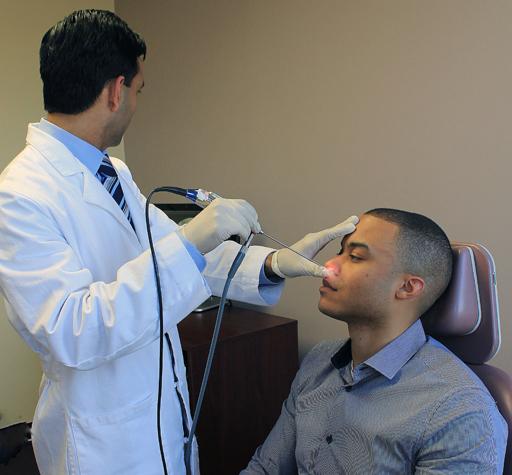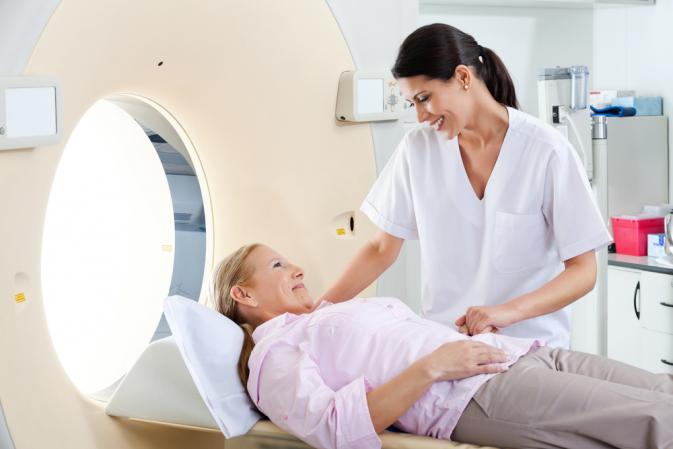
Chronic sinusitis (or chronic rhinosinusitis) is characterized by the presence of two or more of the following key symptoms for at least 12 consecutive weeks, one of which should be either:
This can be with or without:
Some patients may also experience ear or teeth pain, bad breath, sore throat, irritability, and/or lack of energy.
Take the self-assessment test to check your symptoms.

Chronic sinusitis is diagnosed based on the presence of the above key symptoms, and confirmed by either:
Chronic sinusitis is a broad diagnosis that includes different subtypes of inflammatory disease, further classified based on the presence of nasal polyps. Other tests might be performed, such as smell test, sinus cultures and/or allergy tests.
Additional FAQs related to the diagnosis of chronic sinusitis
Nasal endoscopy is indispensable in the diagnosis of chronic rhinosinusitis. It offers the advantage of a global evaluation of the nasal cavity and the outflow tracts of the sinuses visualising the potential presence of nasal polyps and/or secretions at this level. In case nasal endoscopy does not provide final diagnosis, a CT scan of the sinuses will generally be performed. Other tests might be performed, such as nasal patency measurements, smell test and/or allergy tests.
Smell can tested by in a subjective way by means of different smell tests such as UPSIT (University of Pennsilvania Smell Identification Test), Sniffin' Sticks or Barcelona smell test. Additionally, there is a way to do an objective measurement by means of smell-evoked current measurements. These tests are in general supplemented by an MRI (scan) examination of the skull base in order to evaluate the olfactory bulbs (smell region in the brain).
X-ray (Röntgen radiation) of the skull or sinus in case of chronic (rhino)sinusitis is no longer advise.
MRI (magnetic resonance imaging) is an imaging modality that does not require radiation exposure. MRI instead uses a magnetic field and radio waves to create images in the area of concern within the body. MRI is often used to evaluate disease other than chronic rhinosinusitis or nasal polyps. The MRI scan will show more details on the type and size of a lesion and its relation with surrounding structures. This will help your ear-nose-throat (ENT)-doctor in making a diagnosis and a plan of treatment.
A CT (computed tomography) scan is advised in case of chronic rhinosinusitis with or without nasal polyps or other disease in your nose/sinus that might indicate surgery or when the ear-nose-throat (ENT)-doctor is not sure about the diagnosis. The CT scan will not only show the severity and extent of disease and its relationships with other surrounding structures, but will also work as a map for the ENT doctor showing important anatomical landmarks during surgery. In summary, this information helps in making a diagnosis and in case of surgery it helps the ENT doctor in making a plan for the extent and techniques of surgery.
Every CT scan gives radiation and for that reason it is important not to make unnecessary CT scans. Together with your ear-nose-throat (ENT)-doctor you can decide whether the CT scan is needed. Most hospitals use a low radiation dose protocol for CT scans of the sinuses. When these protocols are used, the amount of radiation you are exposed to during each scan is equivalent to few months of exposure to natural radiation from the environment or a transatlantic fligth (two-way).

